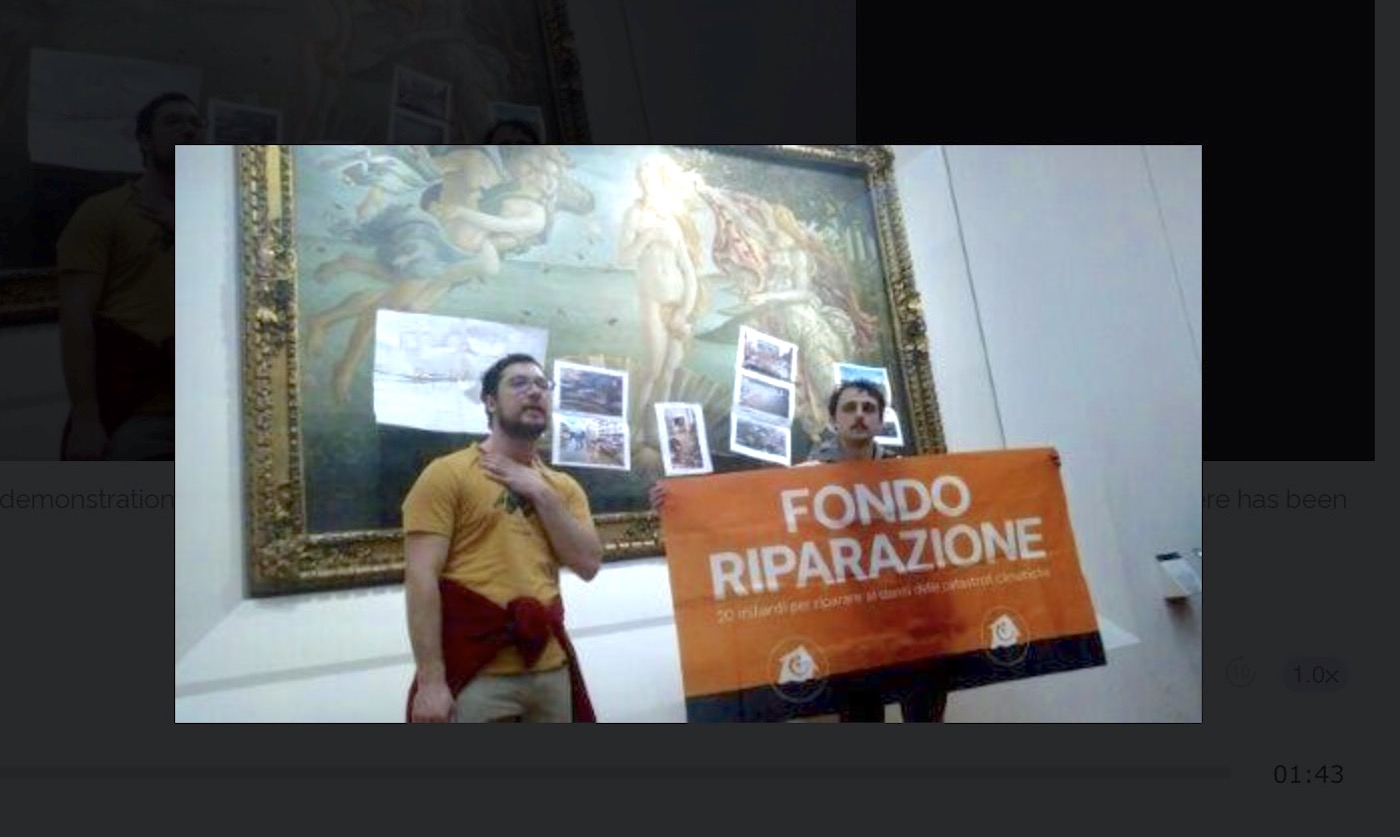Climate activists have directed their attention to Botticelli’s renowned masterpiece, The Birth of Venus, displayed at the Uffizi Gallery in Florence. In a senseless move, two members of the ‘Last Generation group’, a national student-led alliance, affixed images portraying environmental devastation onto the protective glass encasing the fifteenth-century artwork.
The chosen images depicted a flooded Tuscan town, serving as a stark reminder of the consequences of climate inaction. Expressing their frustration with government negligence, one of the protestors condemned the authorities for downplaying environmental crises while enacting ineffective legislation.
However, their protest was short-lived as they were promptly removed from the gallery premises and taken into police custody, as reported by France 24. Notably, this incident follows a recent ruling by a Florence judge, who acquitted two activists involved in a similar protest targeting another Botticelli canvas in 2022.
Italy’s response to such actions has been firm, with the parliament passing legislation to increase penalties for those found guilty of damaging cultural sites and monuments. This legislative move reflects the broader context of escalating climate activism across Europe.
Last Generation, whose protests commenced before Italy’s general election in 2022, has consistently urged policymakers to prioritize climate change mitigation efforts. However, recent assessments by the European Commission reveal Italy’s struggle to meet its emissions targets, underscoring the urgency of such activism.
Notably, Europe has witnessed a series of climate-related protests, including the recent incident involving the Mona Lisa being splashed with soup and Monet’s Le Printemps. As public consciousness on environmental issues grows, art becomes both a medium for expression and a focal point for activism, highlighting the intersection between culture and climate.

Botticelli’s “The Birth of Venus” is a seminal Renaissance masterpiece celebrated for its beauty, grace, and symbolism. Painted in the mid-1480s, it remains one of the most famous and revered works in the history of Western art.
The painting depicts the goddess Venus, born from the sea foam and standing on a giant scallop shell, being blown towards the shore by Zephyrus, the wind god, and being greeted by the nymph, Chloris. The composition is rich with symbolism, drawing inspiration from classical mythology and humanist ideals of the Renaissance.
Commissioned by the powerful Medici family of Florence, “The Birth of Venus” was likely created for their villa at Castello. The Medici were great patrons of the arts and supported many prominent artists of the time, including Botticelli.
The painting reflects the revival of interest in classical mythology and philosophy that characterized the Renaissance period. Botticelli’s portrayal of Venus as a symbol of beauty and love, emerging from the sea embodies the ideals of humanist thought and celebrates the beauty of the natural world.
After its creation, “The Birth of Venus” remained in the possession of the Medici family for several centuries before eventually finding its way to the Uffizi Gallery in Florence, where it remains one of the museum’s most treasured possessions.
Over the centuries, the painting has captivated audiences with its ethereal beauty and timeless elegance. It has inspired countless artists, writers, and thinkers and has become an enduring symbol of the Renaissance aesthetic.
“The Birth of Venus” continues to be studied, admired, and celebrated for its exquisite craftsmanship, innovative composition, and profound symbolism. As a masterpiece of Renaissance art, it stands as a testament to the enduring power of creativity and the human spirit.
Photo: Via Twitter

